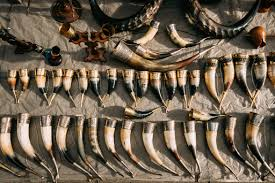
Previously we’ve covered tea, coffee and hot chocolate, so today we’re going to look at the history of something a little stronger; alcohol. From the very beginning of humanity we’ve drunk alcohol with some scientists arguing that early primates began eating fermented fruits which contained ethanol as early as eighty million years ago! Why did we start drinking it? Well, for a number of reasons not limited to the fact that it makes us giddy, lowers stress and historically, has provided us with something to drink that won’t immediately kill us (it could still kill us in large quantities of course, but dysentery was deemed a rather less pleasant way to go). In the medieval period alcohol took on a new role as beer-houses and taverns sprang up so that the drink became a major element of local economies and brewing/ distilling became a point of pride for many. Read on to learn about the history of spirits in Waterford.

The oldest known alcoholic beverage that is still consumed today is mead – sometimes called honey wine – which is a drink made from honey and spices. Vikings used mead as a beverage but drinking also took on symbolic connotations and was used to toast allies and seal agreements. It also took on a mythological role with regard to the gods who drank mead every night at their feasts. They also told of a being called Kvasir who was created by the gods by spitting into a barrel. Kvasir was the wisest of all of them and on his death they turned his blood into mead. We’ve all seen the vikings depicted in pictures and on film/ television and we’ve seen them drinking from horns. Drinking horns were certainly used by the vikings though they also used other drinking vessels like wooden cups and even glasses called hrimhaldar. Unfortunately no drinking horns have been found in Waterford but the mazer hanap – a large communal drinking vessel – and other mazers or drinking vessels have been found. Mazer is a Germanic word which has its roots in ‘meader’ or mead bowl, which tells us that communal consumption of mead happened here in Waterford too.
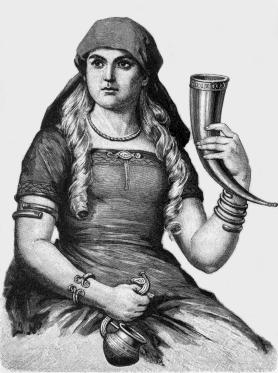
Here in Ireland though we are rather better known for another beverage – Whiskey. The first whiskey distilled in Ireland was probably around 1000 AD and it soared into popularity across Europe by the twelfth century. It was a very different drink to our modern iteration and would have been seasonably reduced as it could not have been preserved over long periods of time. As such, it was not aged and would often have been flavoured with herbs like mint, thyme and anise. The earliest documentary record of Irish whiskey is from 1405 when the head of a clan at Clonmacnoise died after taking ‘a surfeit of aqua vitae’. Aqua vitae was the most widely used term for whiskey across Europe though the spelling changed depending on region and it translates into English as ‘the water of life’. This is a tradition carried on in Ireland today where the Irish phrase for whiskey is uisce beatha, which also means ‘the water of life’. In Ireland it was also sometimes known as ‘poitín’ or ‘builechinn’ (which very accurately means ‘a blow to the head’). By the sixteenth century virtually the whole country was drinking whiskey on a daily basis and distilleries, both legal and illegal, existed in virtually every corner of Ireland.
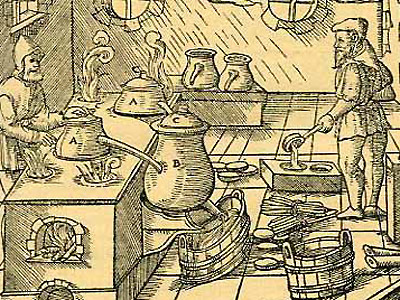
The earliest reference to whiskey in Waterford comes from the Great Parchment book of Waterford where a 1551 entry records that by order of David Walsh, then Mayor of the city, only freemen were to be invited to ‘the Mayor’s drinkings’ where aqua vitae was consumed in large quantities to celebrate the mayor’s election, a decision taken to ‘avoid many disorders’. Waterford during this period, like the rest of Europe, was still subject to occasional outbreaks of the bubonic plague and 1551 was the last major outbreak of the Sweating Sickness in the British isles. While alcohol could save you from diseases spread by contaminated water, it couldn’t save you from diseases spread by other people, and reducing crowds, especially where alcohol was involved, was the only solution (sound familiar?).
It seems though that despite its popularity many people were aware of the dangerous effects that whiskey could have and the will of John Langley who died in Kilmeaden in 1687 referenced the certain amount of glee Mr. Langley took in this fact. He writes that he wants: ‘my body [to] be put upon the oak table in my coffin … and fifty Irishmen be invited to my wake and every one shall have two quarts of the best aqua vitae, and each one a skein, dirk or knife laid before him … [so that] … they will get so drunk they will kill one another’.
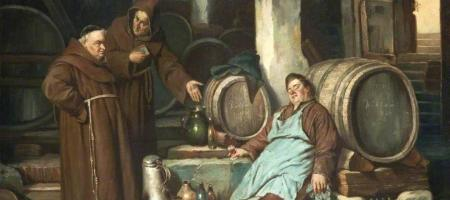
Like Waterford wool, Waterford whiskey was prized here and they were so sure of its quality that it was routinely given as a gift to visiting dignitaries. In 1599 Sir Robert Cecil, secretary of state to Queen Elizabeth I was given ‘a pair of woollen bed coverings and two small roundels of aqua vitae of our making’ which was presented by Nicholas Wyse on behalf of the Mayor. From this we know that whiskey was distilled in Waterford, but sadly the location of the distilleries or any name has been lost. This practice though continued into the seventeenth century and in march of 1629 Robert Lombard of Waterford sent ‘a roundel of iskabahie’ to Dudley Carleton, 1st Viscount Dorchester (This is in the period before standardised spelling, when people played fast and loose with vowels and consonants).
There is one particularly memorable reference to alcohol in Waterford’s Great Parchment book in 1604 which expressly orders that ‘no woman or maid of what quality or degree so ever shall in them or their proper person retail any wine, ale, beer or aqua vitae within this city’. While it may have been an effective marketing technique to have your wine sold by pretty young women, clearly the problem ran deeper in the city and this particular law was actually made with the intention of clamping down on ‘horedom’ or prostitution in the city. Historically, prostitution, like poverty, has been blamed for the spread of disease (even outside of the usual diseases which go along with such behaviour). This is usual because disease proliferated in areas where such things were common and in an era before modern science and medicine the link between this and the lack of clean water, crowded spaces and poor diets was not yet noticed.
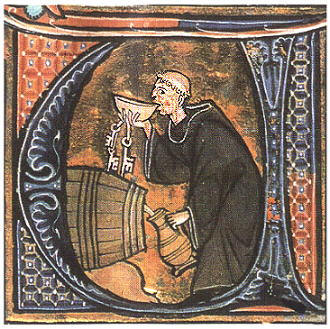
In the eighteenth century there were three distilleries remaining in Waterford that have been recorded but with the wide availability of a number of drinks at that point, imported and local, small distilleries gradually began to disappear and alcohol was commercialised somewhat. Whiskey itself fell out of favour and mead was virtually non existent during this period. It did retain some popularity among the poorer classes though, especially with the poverty and starvation of the 1840s.
During the famine the price of whiskey rose dramatically along with everything else, which we know from the letters of Captain Thomas Roberts RN who wrote in 1847: ‘the new poor rates will exceed six shillings in the £ and the markets are, at east doubled in price – a leg of mutton that was 4d or 5d, is now 9d – bread exactly doubled Beer & Whiskey greatly raised – in short – there is a melancholy prospect before us’. This is in keeping with the rest of the country which saw a similar rise in prices, in Cork for example, the price of local whiskey went to 7d per gallon owing to a shortage of product. In that time whiskey was made from grain and sometimes even potatoes, so every drop of Irish whiskey represented potential food which had been diverted. Whiskey may have kept the poor warm and reduced their gnawing hunger temporarily, but because of the scarcity even this was soon out of reach.
Alcohol has clearly always had an important place in our hearts, but during the medieval period it retained a particular importance. During this time everyone from children to grown men and women drank spirits and ales because it was basically all they had which was safe to drink. Local water sources could be easily contaminated and virtually every other week there was a new plague to be worried about. However, beyond necessity, alcohol has had symbolic and ceremonial roles throughout history, from Viking mead to the whiskey given to foreign diplomats to strengthen connections between Waterford and foreign powers proving that alcohol has for eighty million years, been so much more than a drink.
Check back in a couple of weeks and we’ll look at the history of beer in Waterford!
Further Reading:
Des Cowman, ‘Drink (in the Waterford area to c.1840)’, Decies Vol. 22: https://www.waterfordcouncil.ie/departments/library/ejournals/decies/decies-no22.htm


